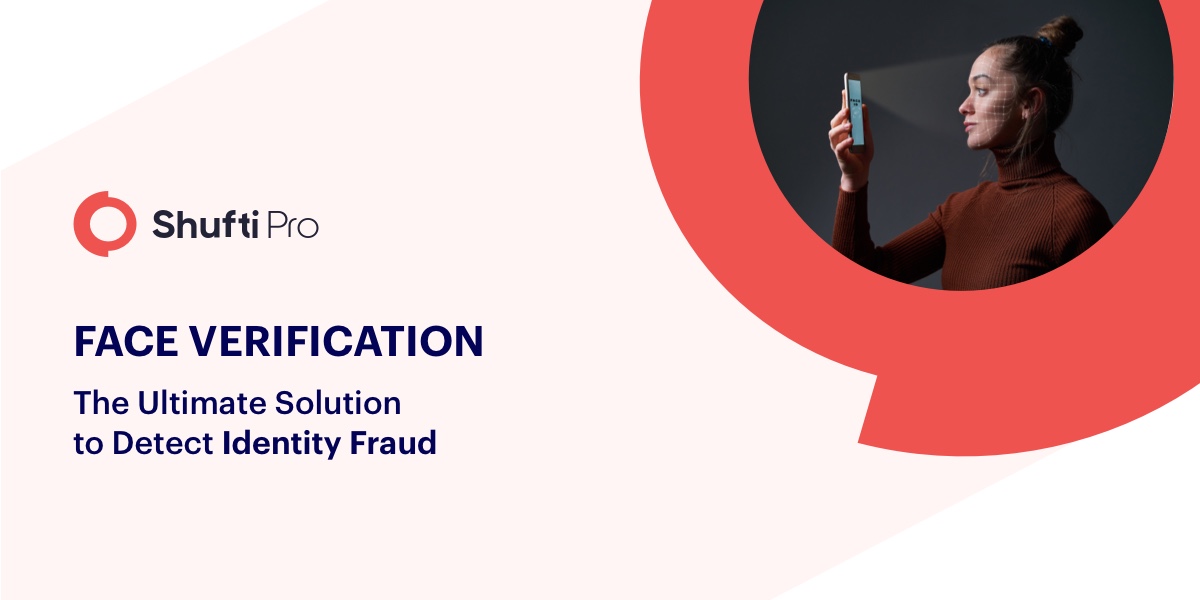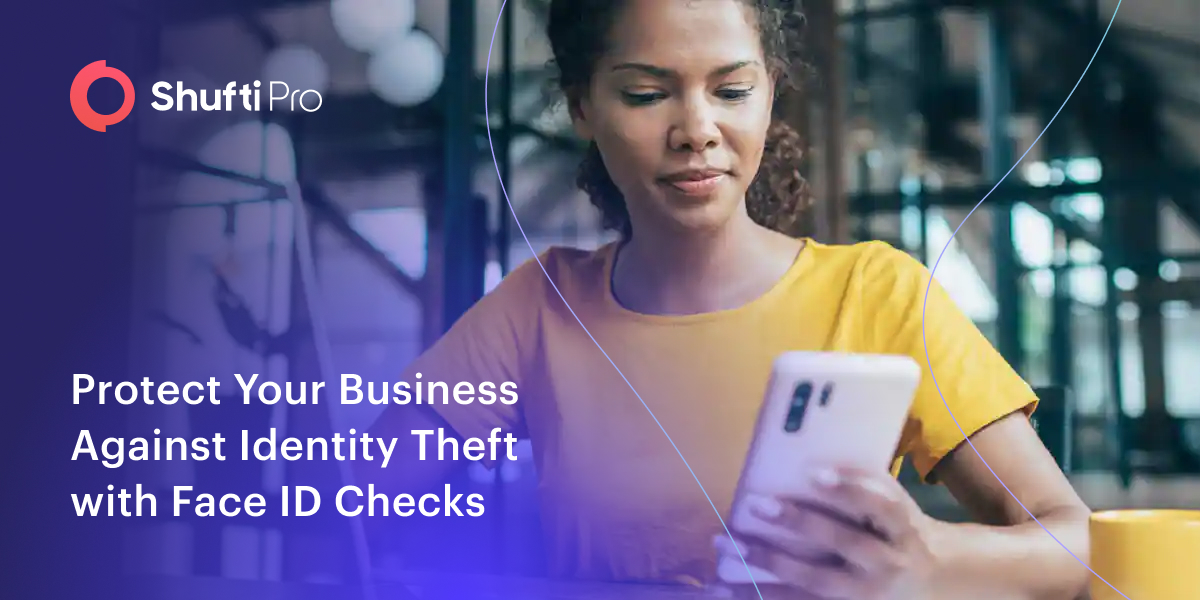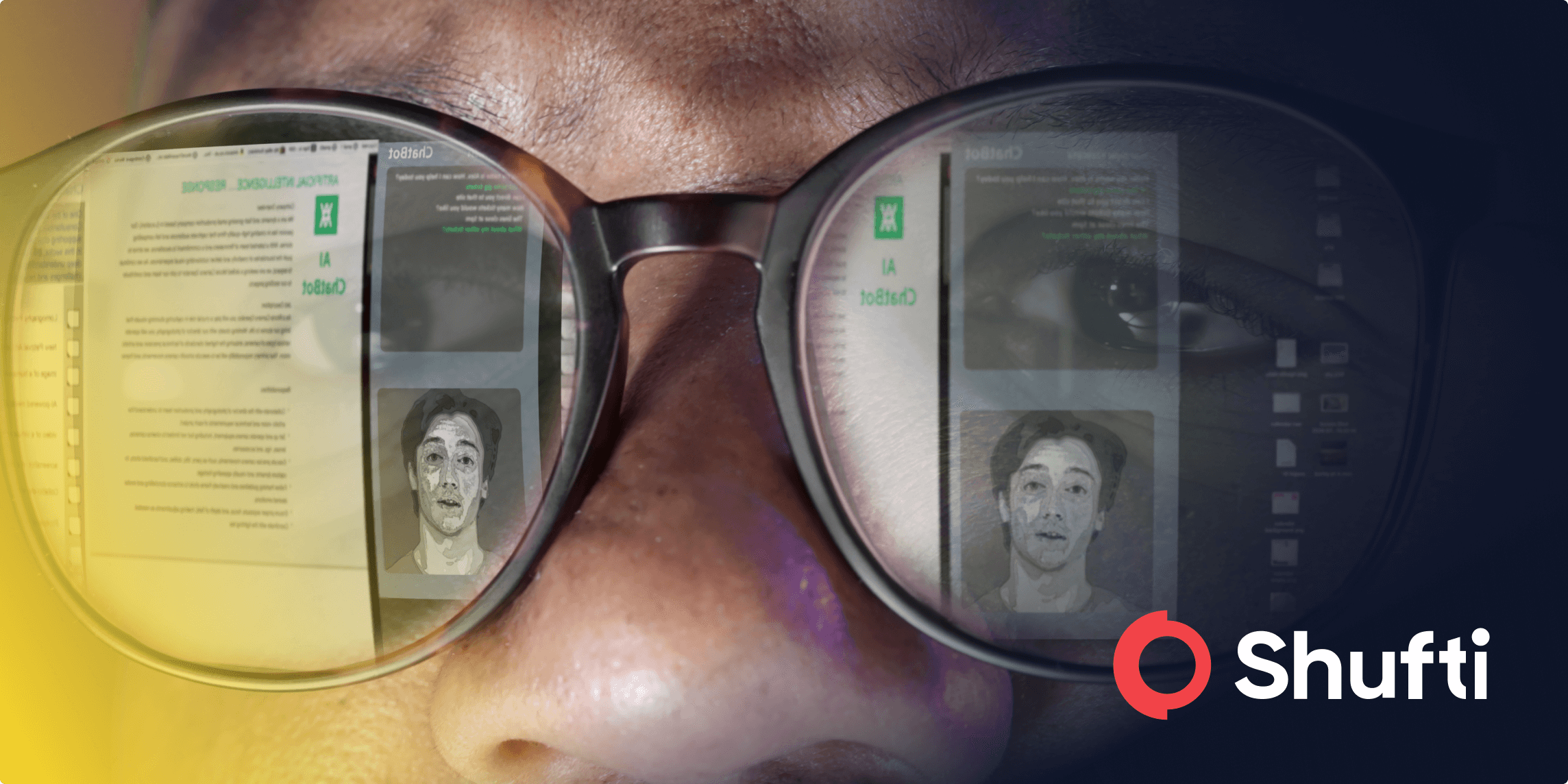Face Verification – One Solution for Several Identity Frauds

Biometrics is the technology that verifies the unique personality traits of a person to identify him. Biometrics include face verification, eye retina screening, voice recognition, and fingerprint scanning. All types of biometric verifications are used widely for customer onboarding, security protocols, regulatory compliance, phone unlock, etc.
Face verification bears huge potential for businesses. The businesses are required to run complete KYC and AML screening on their customers and face verification is a feasible real-time solution for thorough compliance. Other than that, face verification helps businesses in fraud prevention, customer onboarding, customer verification at the time of making transactions, verification of vendors and other businesses in B2B or B2C relationship. Biometric Verification is like by consumers as well, a study found that 74% of consumers believe biometrics are safer and more secure than businesses.
Businesses in financial, non-financial, e-commerce, legal, retail, etc. all can utilize face verification for above mentioned benfits.
One of the major threats to businesses is the people connecting to them with fake identities. Such fake identities can take several facets to defraud businesses. Below is a list of some major fraud scenarios that are conducted through fake/stolen identities.
-
Stolen Identity
Criminals steal the identity of a person, by using his ID card, driving license, or account credentials to access his account, to get free services entitled to the original person, to execute illegal acts. This is one of the most common crimes that hit businesses of all types and sizes. The reason why such businesses are required to practice KYC and AML screening on their stakeholders.
-
Fake Identity
Criminals make fake identity cards and other identity documents that neither belong to any real person nor are issued by some authority. Such cards often appear real to the naked human eye but if screened through document verification software they are identified as a fake one within seconds. Because the human eye could be manipulated through look alike QR codes but an AI-powered software could identify such frauds within seconds.
-
Synthetic identity
Synthetic identity is a type of planned fraud. In this case, the criminals build a new (synthetic) identity by using some of the original information and some fake information. As per payment frauds insights (2019) of federal reserves, synthetic identity fraud is the fastest-growing fraud in the united states. Also, synthetic identities are created by using the identities of children, homeless and elder people, because such identities remain unused for a long time.
Synthetic identities often get them past weak security protocols, especially when manual verification is adopted or the software only verifies the ID card number and does not verify the originality of the identity document. Synthetic identity is not like “fake identity”, because it is a combination of fake and original identity. This lethal combination makes it difficult to identify a synthetic identity by just verifying the ID card number. It requires a thorough screening solution that verifies the document, face, and the ID card number simultaneously to identify a synthetic identity among the original identities.
-
Ghost Identity
This is also a type of stolen identity but of a dead person. Criminals use the identities of dead people to develop synthetic identities and to get free benefits that were associated with that person, e.g. pension, insurance, etc. Ghost identities could also hit all types of businesses, government organizations, banks, insurance companies, etc.
Face Verification is the Ultimate Solution
Face verification is one of the dearest biometric technologies of this age. Why? Because it is easy to use, integrate, and is becoming more refined with every passing day. It is proved time and again that face verification along with document verification is a feasible solution to detect all types of identity frauds. The process adopted in the face recognition solution does not leave any loophole for criminals.
Face matching
The face verification process screens a person’s face in real-time and matches it with the face on the identity document (the document is already verified through “document verification” solution). If a criminal is using a stolen, fake or synthetic ID card he would be identified at this stage as a criminal could steal the identity but he could not steal someone’s face.
Liveness detection
Face recognition technology detects liveness through minor facial movements. The AI-based system detects minor movements like the blink of an eye, smile, etc. So there are no chances that a criminal could show a picture of a person, a printed photo, etc. In the case of video verification, the user is asked to take a selfie video and to make some facial movements like a smile or blinking eyes. The AI-based system detects the movement and verifies that an original person is making the verification.
3D depth perception
This feature leaves no loophole for fraud, as the picture or video uploaded by the end-user is screened for unique facial features. In case a criminal has developed a synthetic identity by using the ID card number of a person with alike facial features, 3D depth perception will detect the minor difference in the facial features so, identity theft will be detected at the very first stage.
3D depth perception detects the face image for unique facial features shown in the photo in an identity document. Also, it screens the depth on the contour points and edges of the face to detect a picture taken from a paper-backed photo or photoshopped images.
To wrap up, face verification is the ultimate solution for several needs of the businesses. Face verification delivers highly accurate results within a minute. The easy integration of such solutions is easy ad swift, making regulatory compliance, customer onboarding, and fraud prevention an easy affair for global businesses. No matter how many facets a criminal changes to get into a business’s system face verification eliminates all such attempts at the very first stage.











